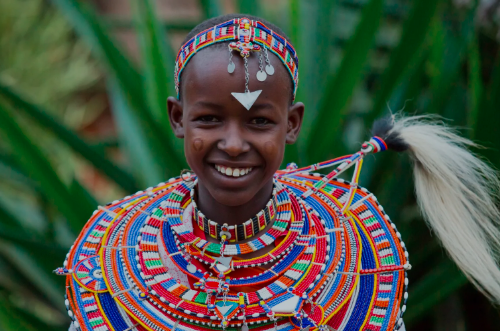Fashion has always been a powerful form of self-expression, and the African continent stands as a vibrant canvas where diverse cultures, histories, and traditions merge to create a rich tapestry of style. In recent years, African countries have emerged as significant players in the global fashion industry, challenging conventional norms and redefining the narrative. This exploration delves into the highest African countries in fashion design, shedding light on the unique stories, talents, and innovations that have propelled these nations to the forefront of the international fashion scene.
- Nigeria: The Giant of African Fashion
Nigeria, often referred to as the giant of Africa, boasts a dynamic and thriving fashion industry. The country has produced some of the continent’s most influential designers, models, and fashion influencers. Lagos, the commercial capital, has become a bustling hub for fashion events, including the renowned Lagos Fashion Week. Nigerian designers such as Deola Sagoe, Lisa Folawiyo, and Mai Atafo have gained global recognition for their fusion of traditional African aesthetics with contemporary styles, creating a distinct Nigerian fashion identity.
- South Africa: Where Diversity Meets Elegance
South Africa has long been a key player in the African fashion scene, known for its diverse range of influences and a commitment to promoting inclusivity. Cape Town Fashion Week and Johannesburg Fashion Week attract designers from across the continent. Designers like David Tlale and Laduma Ngxokolo have made significant contributions, drawing inspiration from the country’s rich cultural heritage, including the vibrant patterns of the Ndebele and Xhosa communities.
- Ghana: Nurturing Emerging Talent
Ghana has rapidly gained recognition for its burgeoning fashion industry, with a focus on nurturing emerging talent and promoting sustainable practices. Accra Fashion Week and Glitz Africa Fashion Week provide platforms for both established and up-and-coming designers. Brands like Christie Brown and Ophelia Crossland showcase the fusion of traditional Ghanaian textiles with modern, chic designs, contributing to the country’s rising prominence in the global fashion arena.
- Senegal: The Cradle of Afro-Chic
Senegal, with its capital Dakar, is establishing itself as a fashion-forward nation with a unique blend of Afro-chic aesthetics. The Dakar Fashion Week celebrates the convergence of traditional Senegalese styles and contemporary fashion trends. Designers like Selly Raby Kane have gained international acclaim for their avant-garde designs, reflecting a celebration of Senegal’s cultural richness and artistic expression.
- Ethiopia: Ancient Threads Weaving Modern Tales
Ethiopia, with its ancient history and diverse ethnic groups, has become a source of inspiration for fashion designers looking to blend tradition with modernity. Addis Fashion Week showcases the creativity of Ethiopian designers, and brands like Lemlem by Liya Kebede are making waves globally. Ethiopian fashion often incorporates traditional handwoven fabrics, such as the iconic Ethiopian cotton, celebrating the country’s rich textile heritage.
- Ivory Coast: A Tapestry of Colors and Textures
Ivory Coast, or Côte d’Ivoire, is renowned for its vibrant and eclectic fashion scene. The city of Abidjan has become a hotspot for fashion enthusiasts, with events like the Abidjan Fashion Week gaining traction. Designers like Loza Maléombho infuse their creations with a mix of Ivorian traditions and modern, edgy designs, contributing to the country’s rising influence in the fashion world.
- Morocco: Bridging Tradition and Modernity
Morocco, with its captivating blend of Arab, Berber, and French influences, has a unique fashion identity that reflects its rich cultural heritage. Marrakech hosts events like the Marrakech Fashion Week, where designers like Zhor Raïs showcase their designs inspired by the country’s traditional craftsmanship and artistic influences from the Sahara to the Atlas Mountains.
Conclusion:
The highest African countries in fashion design represent a kaleidoscope of creativity, innovation, and cultural pride. These nations have transcended stereotypes, showcasing that African fashion is not a monolithic entity but a diverse and dynamic force with its own distinct narratives. As these countries continue to make waves in the global fashion industry, they bring forth a new era where African designers are celebrated for their unique perspectives and contributions, adding vibrant hues to the ever-evolving canvas of international fashion.
